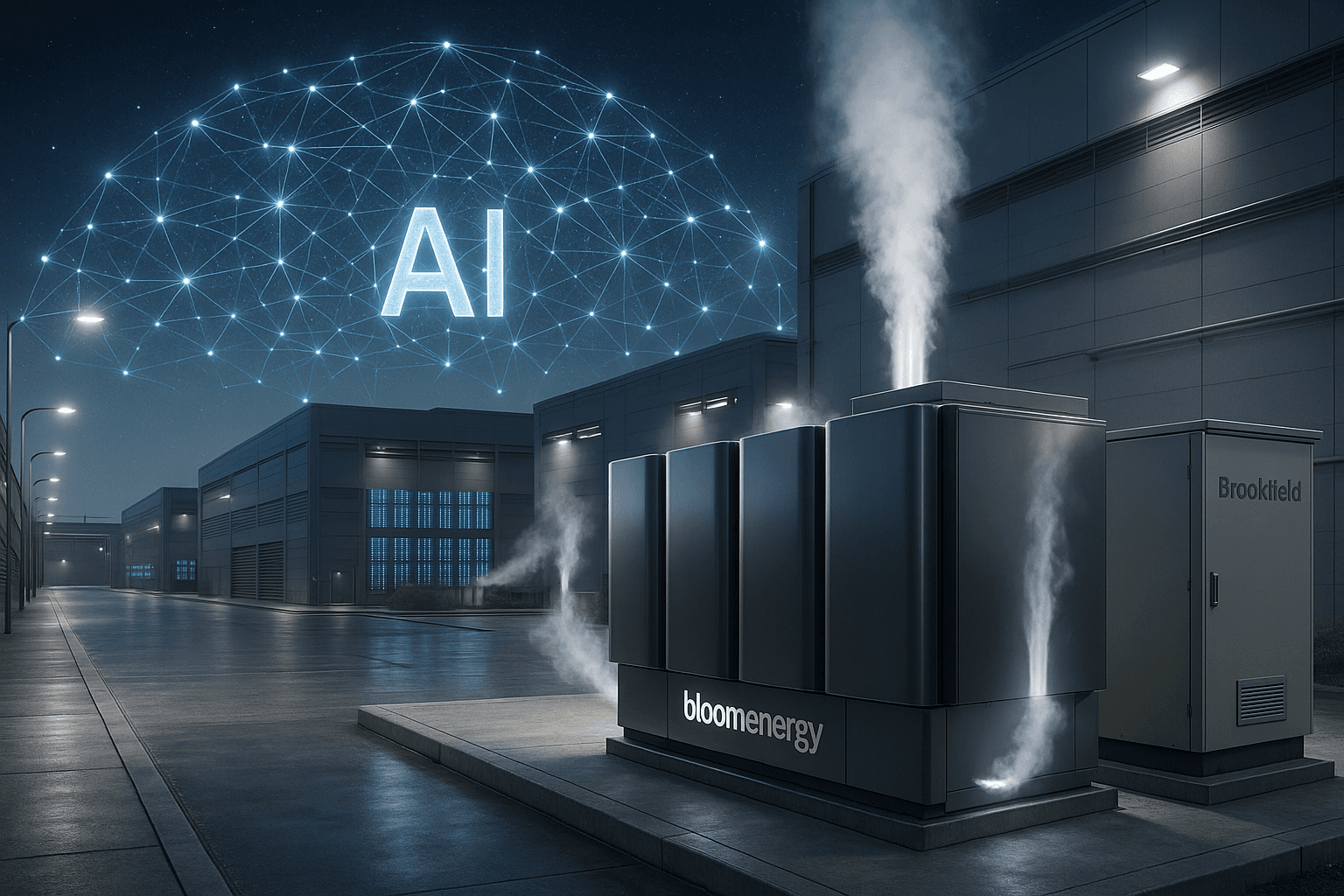Bloom Energy surge 26% on $5B Brookfield partnership for AI data centers

News Summary
Bloom Energy's shares surged over 26% in premarket trading after the company announced a significant partnership with Brookfield Asset Management to supply power for artificial intelligence (AI) data centers. The agreement involves Brookfield investing up to $5 billion to deploy Bloom Energy's fuel cell technology, marking a major effort to address the escalating energy demands of AI infrastructure. The two firms plan to design and construct "AI factories"—dedicated sites combining compute and power capacity—across several global regions, with a European project expected before year-end. Bloom Energy will serve as the preferred power provider for Brookfield's AI facilities, utilizing its proprietary fuel cells (powered by natural gas or hydrogen) to generate rapid, off-grid electricity, which is increasingly critical for AI companies struggling to secure sufficient power for expanding data center operations.
Background
Global demand for artificial intelligence (AI) computing power is growing at an unprecedented rate, leading to immense strain on energy resources. The push to build massive, power-intensive data centers has put significant pressure on existing electrical utilities, raising concerns about grid capacity and rising consumer electricity prices. Industry giants like Nvidia and OpenAI have already revealed plans to construct 10 gigawatts of new data center capacity, roughly equivalent to the electricity consumed by New York City on a hot summer day. Nvidia CEO Jensen Huang has indicated that AI companies will increasingly need to produce their own power to efficiently meet demand and stabilize costs, highlighting the urgent need for innovative, distributed energy solutions.
In-Depth AI Insights
What does this partnership signal about the future of AI infrastructure development and the energy sector's role? - It indicates a rapid shift towards decentralized, on-site power generation for AI infrastructure, bypassing the limitations and instability of traditional grids. - This foreshadows a new competitive landscape in the energy sector, focused on providing bespoke, rapidly deployable power solutions directly to AI clients, rather than solely as utility providers. - The